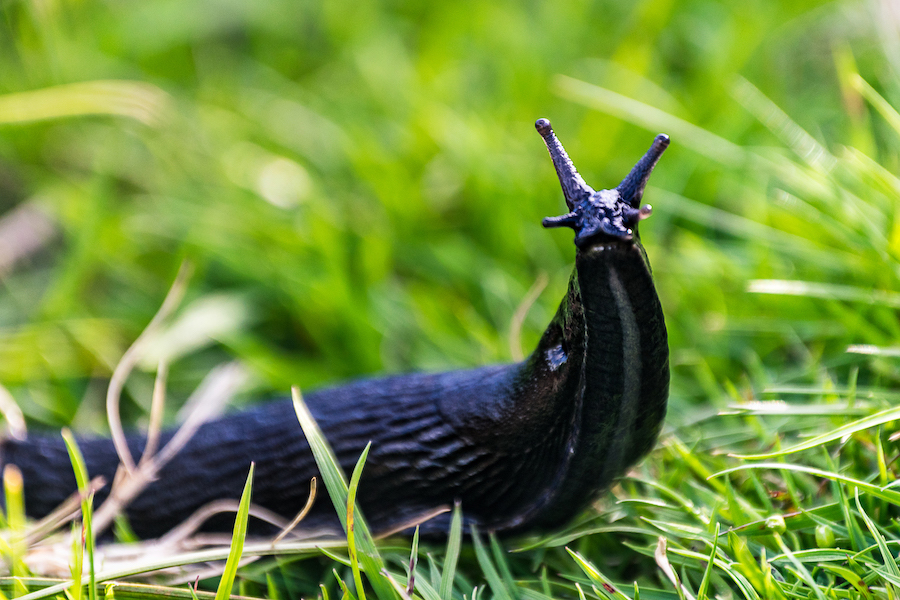Start now to stop slug infestations in spring
Spring seems to be the season for slug infestations. Shannen Godwin, a gardening expert at one of the leading plant and bulb companies in the UK, J Parker’s, reveals why they are so prevalent.
“Slugs are actually active all year round. However, gardeners tend to notice slug activity during springtime. Slugs prefer the warm and damp weather that spring brings and thrive on all of the seedlings, bulbs and new growth on plants, which makes their damage most noticeable in spring.”
The dangers of slugs
In most cases, gardeners become annoyed with slugs because of the damage to plants. Slugs particularly like young plants and seedlings. But also dahlias, lettuces, sweet peas and hostas are a particular favourite for slugs.
However, slugs can cause further problems. For example, the slime trail that slugs leave causes harm to pets when ingested. Pets can suffer from vomiting and excessive drool, for example. Slugs can also carry the parasite, rat lungworm, which can pass on to pets and even humans. This is why it’s always important to thoroughly wash the fruits and vegetables you grow in your garden.

Hostas
Are there more slugs in spring?
There usually aren’t more slugs in spring, although slug eggs typically do hatch at this time of year. However, slugs are most active during spring and autumn, so you may start to see more of them around. Plus, if you’re paying attention to your new seedlings and plants in spring, you’ll be more aware of slug activity.
What to do now to prevent slug infestations in spring
Sow back-up seeds
When planning your seedlings for spring, always sow extra for back-ups. This means if slugs attack your seedlings, you have some still left over to replant. If you end up with too many, you can always gift seedlings to friends and family.
Attract predators
There are lots of garden birds and animals that love to feed on slugs. Hedgehogs, blackbirds, starlings, thrushes and even frogs and toads will enjoy your slugs and will help you to keep the slug populations down. If you can, adding habitats for these slug predators to thrive can help you to naturally control slug infestations. This may mean adding a pond to your garden, building a log pile for hedgehogs, increasing a compost heap or adding hedges, shrubs and trees to your garden.
While you’re waiting for spring gardening activities, now is the perfect time to plan how to add habitats that will attract wildlife to your space.
Start mulching now

mulching garden beds with pine bark pieces
Mulching is a fantastic way to protect plants from slugs, especially if you create a sharp mulch barrier around plants. Sharp grit, ash and bark can help to ringfence your plants, and most slugs will not cross over the barrier. Wood pellets, cat litter and coffee grounds are other mulch materials you can try. However, remember that while this can prevent slugs on the surface, slugs bury underground so it won’t eliminate the risk entirely.
Turn the soil now
If you want to reduce slug populations, one of the things you can do now is to start to turn over the soil. This will expose slug eggs buried in the ground and disturb them, which can reduce the number of slugs in your garden.
Create a slug-free zone
Shannen Godwin from J Parker’s explains,
“It is almost impossible to completely eradicate slugs from your garden, but you can create a slug-free zone. If you have a patio or gravel area in the garden, this can be a great place to establish your plants in pots until they’re hardy enough for other areas of your garden.”
As well as using sharp gravel, you can reinforce your slug-free zone with beer traps, eggshells, and garlic. You can also use salt and seaweed, but be careful that the salt doesn’t touch the plants as it can cause damage. It may also help to use copper rings around plants as copper can give electric shock-style jolts to slugs, which can repel them. Remember that they may try and go under the ring, so make sure it’s deep enough.
During spring and summer, turn over pots every few days to pick off any slugs that may have tried to brave the journey.
Plan slug-resistant plants
The good news is that slugs won’t attack all of your plants. In fact, many plants that can deter slugs. These are typically the plants with strongly scented leaves or textured leaves that are particularly glossy, leathery or hairy. Some slug-resistant plants include roses, ferns, hydrangeas and grasses.
It can also help to combine some slug-resistant plants alongside your seedlings, known as companion planting. Aromatic herbs are usually great to plant next to your vegetables and seedlings. For example, mint and chives can be helpful for companion planting between rows of vegetables.
With slugs offering a benefit to the wider ecosystem and the fact that slug pellets can endanger other helpful garden critters, winter is a great time to plan how you’ll manage slugs come spring. Whether it’s creating a slug-free zone and accepting slugs in other areas of the garden or focusing on planting slug-resistant plants to deter the pests, there are lots of things to consider now, before slugs take hold in spring.





















